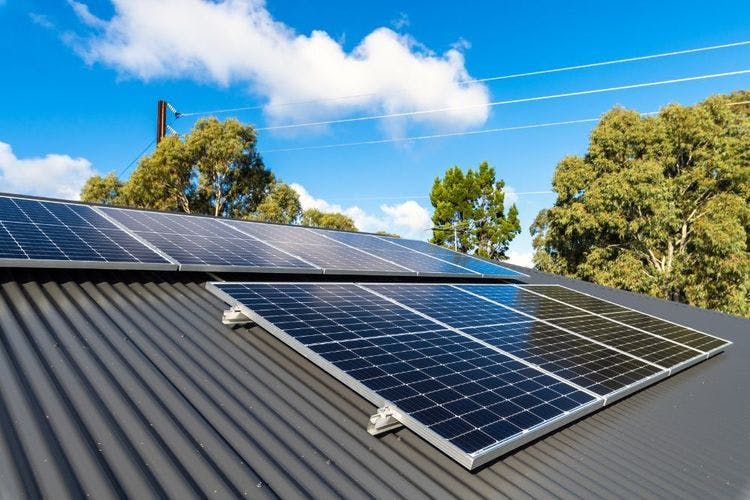In an era where sustainability is not just a choice but a necessity, solar power stands out as a beacon of hope. It’s a clean, inexhaustible, and increasingly affordable energy source. However, the solar panel market is as diverse as it is complex. With a myriad of options available, selecting the right type of solar panel is crucial for maximising efficiency, cost, and space. This comprehensive guide will illuminate the path to choosing the ideal solar panel for your unique needs, shining a light on the characteristics, advantages, and applications of the most prevalent types. Here are some of the most common types of solar panels in use and their particulars.
1. Monocrystalline solar panels
Monocrystalline solar panels are the aristocrats of the solar panel world. Crafted from single-crystal silicon, they are the epitome of purity and consistency, which is evident in their uniform dark hue and sophisticated rounded edges. Their manufacturing process involves cutting cylindrical silicon ingots into wafers, ensuring that each panel is a slice of solar excellence. These panels are not just about good looks; they boast the highest efficiency rates in the industry, typically ranging between 15% and 20%. Their superior performance is particularly evident in space-constrained scenarios, where they deliver an impressive power output per square foot, making every inch count. Monocrystalline panels are the perfect match for residential rooftops where space is a luxury and aesthetics are a priority. They are also the go-to choice for those who view solar power as a long-term investment, offering durability that stands the test of time.
2. Polycrystalline solar panels
Polycrystalline solar panels are the workhorses of the solar family. Born from multiple silicon crystals fused, they sport a distinctive blue, speckled look that reflects their pragmatic nature. Their simpler and more cost-effective manufacturing process makes them a popular choice for those looking to balance quality with affordability. These panels strike a harmonious balance between cost and efficiency, with rates generally hovering between 13% and 16%. They are also more tolerant of high temperatures, ensuring consistent performance even on the hottest of days. If you’re a homeowner or a business on the lookout for a cost-effective solar solution and have a bit more roof to spare, polycrystalline panels are your best bet. They offer a practical solution without compromising significantly on efficiency or aesthetics.
3. Thin-film solar panels
Thin-film solar panels are the chameleons of the solar spectrum. They are created by depositing several layers of photovoltaic material onto a substrate. This process results in panels that are not only lightweight but also exceptionally low-profile, allowing for a level of versatility unmatched by their crystalline counterparts. These panels excel in high temperatures and low-light conditions, outperforming crystalline panels when the sun isn’t at its peak. Their flexible installation options make them suitable for a variety of surfaces, including those not traditionally associated with solar installations. Large commercial or industrial rooftops find a perfect partner in thin-film panels, as do architects looking to integrate solar power into building materials for a seamless aesthetic. They are also the ideal choice for regions with high temperatures and areas prone to shading.
4. Bifacial solar panels
Bifacial solar panels are the innovators, capturing sunlight from both their front and back sides. Typically made of monocrystalline silicon, they are designed to maximise energy production, turning every ray of sunshine into usable power. With the ability to generate more electricity within the same footprint, bifacial panels promise improved efficiency and the potential for lower energy costs over time. They are a testament to the advancements in solar technology, pushing the boundaries of what’s possible. Bifacial panels are ideal for ground-mounted solar systems and large-scale installations. When paired with a reflective surface underneath, they can harness the full potential of the sun, making them a smart choice for expansive solar farms.
5. Passivated Emitter and Rear Cell (PERC) solar panels
PERC solar panels represent the cutting edge of solar technology. By adding a passivation layer to traditional solar panels, they capture sunlight more effectively, ensuring that no photon goes to waste. These panels not only offer higher efficiency but also perform admirably in low-light conditions. The added layer reduces heat absorption, which in turn enhances overall performance, making them a formidable option in the solar arsenal. Whether it’s a residential rooftop or a commercial establishment, PERC panels are ideal for maximising efficiency within a limited space. They are the choice for those who demand the best from their solar investment.
6. A brighter future awaits with solar
The journey to a sustainable future is paved with solar panels, and choosing the right type is a pivotal step.
Consider your installation space, budget, aesthetic preferences, and energy needs to make an informed decision. Each type of solar panel offers unique features and benefits that cater to different requirements.
By understanding these distinctions, you can align your choice with your sustainability goals and ensure that your investment in solar energy is not just bright but brilliant.
Are you ready to embrace the power of the sun? Join Solar Save Club today!
With us, you can simplify this effort by getting recommendations on reliable solar installers in your area by answering a simple questionnaire about your project. If you are planning a solar project, click here to find the best solar installer for you.

